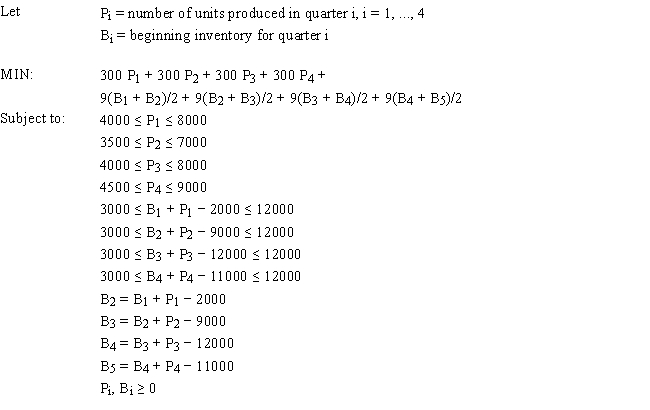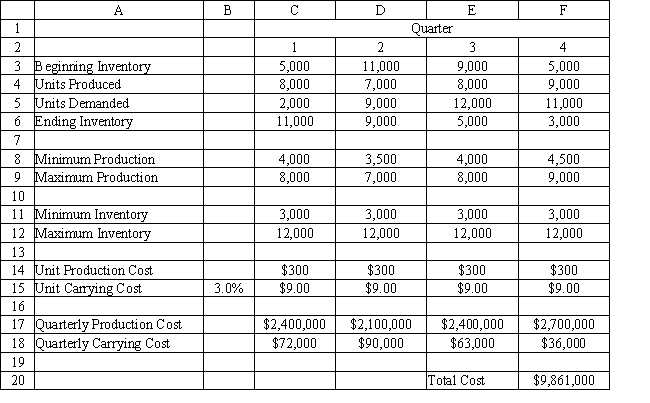Exhibit 3.5
The following questions are based on this problem and accompanying Excel windows.
A company is planning production for the next 4 quarters. They want to minimize the cost of production. The production cost is stable but demand and production capacity vary from quarter to quarter. The maximum amount of inventory which can be held is 12,000 units and management wants to keep at least 3,000 units on hand. Quarterly inventory holding cost is 3% of the cost of production. The company estimates the number of units carried in inventory each month by averaging the beginning and ending inventory for each month. There are currently 5,000 units in inventory. The company wants to produce at no less than one half of its maximum capacity in any quarter. 


-Refer to Exhibit 3.5. Which cells are changing cells in the accompanying Excel spreadsheet?
Definitions:
By-products
By-products are secondary products derived from the manufacturing process or chemical reaction, which may have less value than the primary product but can still be profitable.
Joint Costs
are costs incurred in the production process that benefit multiple, often separable, products or project components.
Joint Costs
Costs incurred when producing multiple products in the same process, where the costs cannot be separated easily for each product.
Support Departments
Units within an organization that do not directly participate in the primary activities of the business but provide essential support services to revenue-generating departments.
Q2: There are a variety of problems a
Q4: The following network depicts a transportation/distribution problem
Q5: Refer to Exhibit 10.2. Based on the
Q25: The Byte computer company produces two
Q29: The optimal trade-off between risk and return
Q30: Consider modeling a warehouse with three in-flow
Q38: occurs when workers deliberately slow down their
Q42: Consider the equipment replacement problem presented in
Q45: Almost all network problems can be viewed
Q53: How is an LP problem changed into